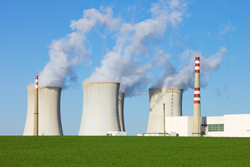Air purification with activated carbon

Cabin car with a carbon filter
Activated carbons are used in a wide range of air treatment applications. These are the activated carbon applications where air is the main carrier gas from which impurities need to be removed. In most cases, the impurities can be removed to below the detection limit, meaning that the most stringent air quality regulations can be complied with. The activated carbon technology is reliable, simple and has been proven over many years.
Activated carbon is used in small pipe/cigarette filters treating small flow rates, removing a number of harmful smoke components that are defined in the Hoffmann list of hazardous smoke components or to treat big flow rates in waste incinerator plants to remove dioxins and mercury.
Activated carbon is used to
- recover products from air streams. Examples are solvent recovery installations in the printing industry, SO2 recovery in the TiO2 production.
- protect directly the human body.
- Examples are personnel and collective protection filters, cigarette and pipe filters.
- control odour. Examples are odour control in municipal waste water treatment plants or small appliance filters in the refrigerator at home.

Nuclear power plant
- control Volatile organic compounds (VOC) in industrial plants. Examples are paint cabins, VOC emissions at cellulose acetate filter manufacturers and many other processes.
- remove inorganics from flue gases. Examples are mercury removal in crematoria or removal of dioxins and mercury in hazardous waste incineration plants.
- store fruit: removal of CO2 in ULO (Ultra low oxygen) applications. Activated carbon is used in scrubber systems to control carbon dioxide and ethylene in fruit storage facilities to prevent premature ripening or decay.
- protect against radiation: in nuclear power plants activated carbon is used for radiation control.
